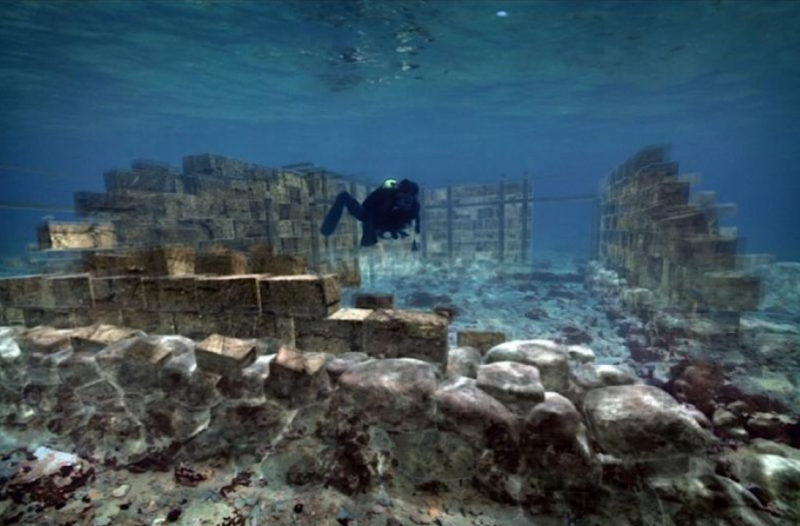Pavlopetri
Pavlopetri, an underwater city off the coast of southern Laconia in Peloponnese, Greece, is roughly 5,000 years old, making it one of the oldest submerged lost towns in the Mediterranean. Pavlopetri is rare in that it has an almost complete town plan, complete with streets, buildings, and tombs.
Pavlopetri, discovered in 1967 by Nicholas Flemming and mapped in 1968 by a team of archaeologists from Cambridge, is located on the Peloponnese peninsula between the islet of Pavlopetri and the Pounta coast of Laconia. On the island of Elafonisos, the location lies northeast of the village. The archeological site, as well as the islet and surrounding sea area, are located in the municipality of Elafonisos, on the former "Onou Gnathos" peninsula.
The ruins were originally dated to the Mycenaean period, 1600-1100 BCE, but subsequent studies revealed an older habitation date of no later than 2800 BCE, so it also includes early Bronze Age, Middle Minoan, and transitional material. The village was believed to have been flooded in 1000 BCE by the first of three earthquakes that struck the area. Because the land never re-emerged, it was never built on or damaged by agriculture. The settlement plan has not changed over the centuries, despite being eroded. Boats dragging anchors, as well as tourists and souvenir hunters, pose a threat to the monument.
The 2009 fieldwork was extensive in order to map the site. It is the first three-dimensional digital survey of a submerged community. Recent work has benefited from sonar mapping techniques developed by military and oil exploration groups. At least 15 buildings in the city are buried in 3 to 4 meters (9.8-13.1 ft) of water. Only the most recent findings in 2009 span 2.2 acres.
Pavlopetri is part of UNESCO's underwater cultural heritage, as specified in the UNESCO Convention on the Protection of the Underwater Cultural Heritage. The UNESCO Convention on the Protection of Underwater Cultural Heritage protects all evidence of human existence underwater that are one hundred years or older. The purpose of this convention is to prevent the damage or loss of historic and cultural information, as well as looting. It provides an international legal framework to assist state parties in protecting their undersea cultural assets.
Location: the coast of southern Laconia in Peloponnese, Greece
Depth: 4m
Dating: 5000 years old












